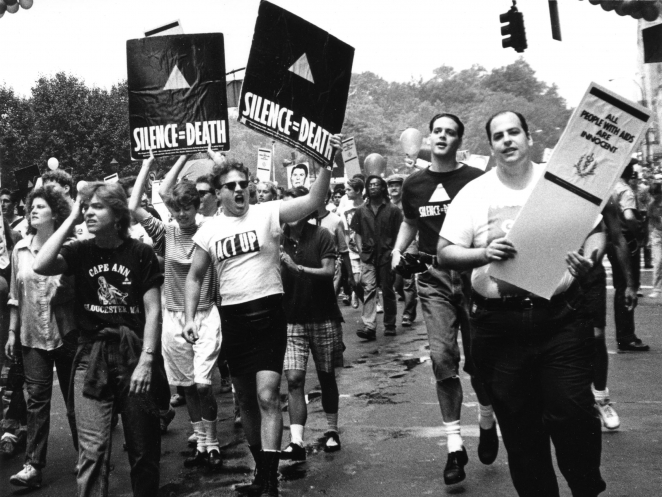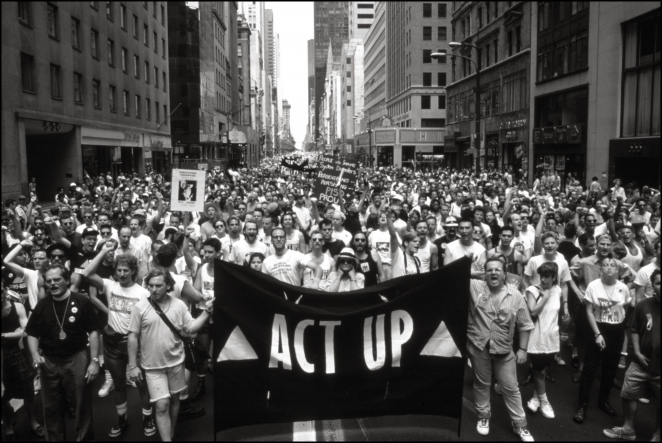The future is inclusive. Anyone denying that is either a bigot or something else that rhymes with the word. Every year we see brands from everywhere in the industry embrace the Pride rainbow in more or less cheesy ways – but there is still so much more that brands can learn from the LGBTQIA+ culture.
The time for support is not over, but if we are to reach a more inclusive future and industry, it is also time to start learning. Support comes in many different ways, shapes and forms, after all; learning can only make it stronger and more powerful.
As we too wanted to learn more about the topic, we reached out to Gauthier Boche, Vice President Strategy, Innovation and Development Europe at Marks, who kindly shared his views below.

Beyond the rainbow: What brands can learn from LGBTQIA+ culture
During Pride month every year, brands of all scales and sectors let go of their carefully curated equities and embrace the Pride rainbow in a display of – sometimes debatable – solidarity with the LGBTQIA+ community. But it might be time to turn the conversation around brands and queer communities on its head – not to ask how brands can support the movement, but what they can learn from it.
It is 50 years since the Stonewall Riots gave us the founding movement of gay – later to be known as LGBTQIA+ – culture that has become a catalyst for social, racial and gender diversity and equality. It’s a perfect moment to look at its evolution through the years, and to explore what we as designers of brand identities and experiences can learn from this mighty revolution – and the masters of reinvention among the community.
The evolution of LGBTQIA+
As with any culture, LGBTQIA+ culture is beautifully nuanced and cannot be placed in a neat box, however there are some distinct and key narratives in the community’s cultural shift: Firstly, the Making of the Modern Gay (in the 1970s to early 1980s), following the Stonewall riots which marked a move from the introvert to ‘out and proud’. Then, the dramatic Age of AIDS in the 1980s to 2000s, and since, the Rise of Gender Fluidity.
The Making of the Modern Gay saw the gay revolution after Stonewall make headway in bringing discrimination based on sexuality into the public debate. It sparked the creation of an identity and ideology in response to criminalization, and normalisation of homophobia in the mainstream media. It saw the birth of the rainbow flag, Pride parades and early sapphic symbols, with outspoken advocates such as Masha P Johnson showing and normalising gay.
The Age of Aids, however, drastically changed how the gay community was perceived by the world, and in turn impacted how the community came together. With gay men dying en masse, the urgency to be out – and loud and proud about it – intensified. Embracing one’s identity and encouraging others in the gay community to do so as well became the ultimate form of protest and healing in the face of tragedy. During this time of adversity, the community galvanised, unified its voice, and “gay culture” evolved into something new.
The age saw the rise of AIDS activism, with AIDS symbols such as the Pink Triangle creating a powerful re-contextualisation. It also led to many in the community living life with more intensity, with the likes of Andy Warhol openly and vibrantly expressing their queer identity, for example, or the popularisation of gay nightclubs, such as ‘The Stud’ in San Francisco.

Dare to be fluid
In the late 90s, thanks to a new drug strategy called tritherapies, the AIDS epidemic became less deadly and sparked the gay community to focus on new fights – and with it came the Rise of Gender Fluidity. In 1990, American philosopher and gender theorist, Judith Butler, released Gender Trouble: Feminism and the Subversion of Identity, changing LGBTQIA+ culture as we had known it.
By defining gender as a social construct, Butler unveiled a whole new world of possibilities for self and social identification. And it changed everything.
A new narrative rose around the fluidity of identities. Identity could change over time (gender fluid), or multiple identities could co-exist in the same person at the same time (non-binary). After the “gay” question, the “queer” and “trans” questions came to the fore, changing the LGBTQIA+ narrative forever.It brought with it a new world order of self-expression and empowerment, driving trans activism, as well as gender-fluid fashion, the rise of male beauty brands and a move towards more diverse and inclusive brands that go beyond gender categorisation.
Be out, loud and proud
So, what does this evolution of identity and community teach brands about how to connect with people in meaningful ways?
Members of the gay community certainly understood the power and rules of branding like no other. Every rally, every march and every initiative led by the gay community during the 80s and 90s helped to establish a true brand of its own.
As designers, we build a brand’s identity early on, using it as a north star guiding everything we create. We want our brands to be out, loud, and proud in everything they do. The age of the Making of the Modern Gay saw a determination to create lasting impact and promote change in hearts and minds. This should be something every well-managed brand aims to do. Take fashion brand Telfar. It fights against the established rules of fashion, against exclusivity, and confidently proclaims “It’s not for you, it’s for everyone”.
Another key lesson that brands can learn from the activist communities of yesteryear is that it is crucial to embrace a purpose-driven model to connect with consumers. Define your mission, disrupt with purpose, and drive a cause and a community to rise above the noise. Tofurkey and Oatly, for example, do this well. The former uses a funky brand identity for an impactful climate change plea, while the latter fuels the ‘post-milk’ generation with groundbreaking honestly. They have leveraged activist-driven visual and verbal language to disrupt, be bold and unapologetic.

A moving narrative
In addition, just as the LGBTQIA+ community embraced the opportunity to be fluid and change its narrative, brands today should embrace this fluidity and cast off some of the rigid guidelines they depend on. Increasingly, brands are developing multiple identities and experiences that work for different people.
Cultural and artistic organisations do this particularly well, embracing diverse identity systems to break from rules. Just look at the fluid visuals of Casa da Música in Porto or the Cracow School of Art and Fashion Design. Both successfully signal inclusivity and flux.
We are ever-evolving creatures and expect our favorite brands to continue to evolve with us and to stay in tune with evolving culture – those that don’t, become irrelevant. Don’t put your brand in a box – see how it can grow stronger and more fluid.
A future of more inclusive brands
Linking LGBTQIA+ Culture and brand design can sound a bit ‘queer’, but both are by-products of pop culture created by the rise and transformation of mass media. The evolution of ‘Gay’ into ‘LGBTQIA+’ and beyond shows us how evolution and change can build a bigger, stronger and more inclusive foundation on which to stand – a progress that parallels the evolution of brand identity. Brands have the unique opportunity to disrupt, challenge and transform the norm, taking their practices from unconventional to mainstream.
The LGBTQIA+ community has challenged the barriers and norms of heteronormativity and disrupted societal norms to build a better world for their friends and families; a disruption that has only brought positive change.
Search for how your brand can test limits and break down barriers for the good of future generations and you will be pleasantly surprised with the positive outcomes.






